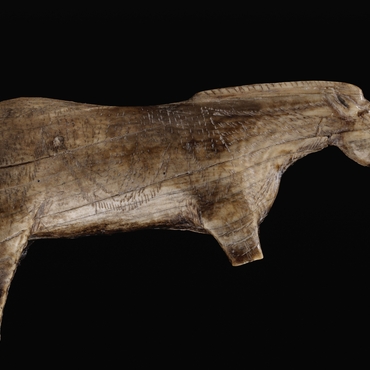
- Home
- Discover the sculptured rock shelters
- Life 15 000 years ago
- The Symbolic Evidence
- Techniques
The Magdalenians possessed technical mastery, as can be seen in their combined use of engraving, sculpture, painting and drawing.
Engraving was the most commonly-used technique, perhaps because it lasts the longest. A number of different types of engraving have been found, including picking, grooving, scoring and scraping.
Both drawing (using a pure pigment such as charcoal) and painting (using a combination of pigment, binder and filler) made use of three basic colours – red, obtained from ochre or hematite, yellow from goethite, and black from manganese or charcoal. Blue and green were absent. Monochrome was often the rule. Various means were used to apply the colours, including fingers, charcoal sticks, brushes or pads; colours were also blown onto the surface.
Sculpture is quite common in portable art, but rare in cave art. There are two types of sculpture: in the round (where the volume carved on all sides) and relief (where the volume remains attached to the wall). Wall sculpture is only in relief; statuary is non-existent. Modelling (with clay) is extremely rare.
The incorporation of the support in the realization of graphics elements is one of the outstanding features of European Palaeolithic art. A support is said to be a "participant" when it serves as a framing element for compositions or when its visual (colour) or formal (reliefs, volumes) qualities are involved in the development of creations.




